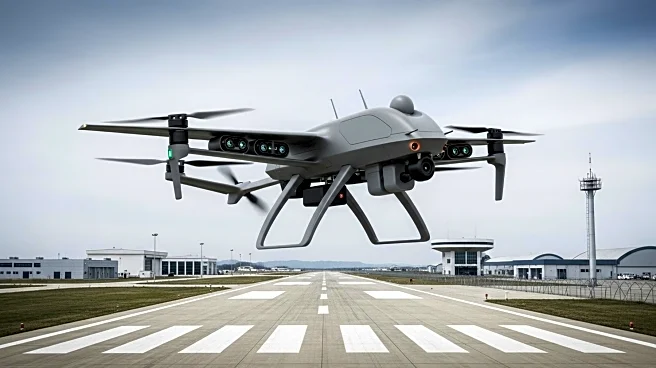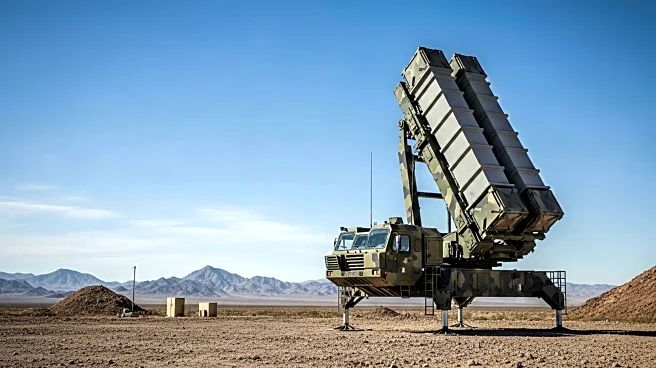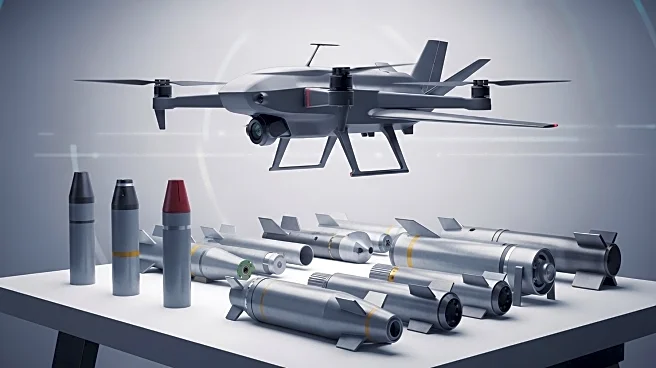What's Happening?
General Atomics Aeronautical Systems has announced a partnership with South Korean firm Hanwha Aerospace to develop a short-takeoff-and-landing (STOL) version of the Gray Eagle drone. The collaboration
aims to design and produce a production-representative version of the drone, leveraging the expertise of both companies. The STOL Gray Eagle is expected to have its first flight in 2027, with deliveries starting the following year. This version will be built at a new production facility in South Korea, which is expected to reduce costs. The drone will be capable of taking off and landing on various surfaces, such as dirt roads and beaches, enhancing its operational utility for reconnaissance and surveillance missions. General Atomics has already flown a prototype, demonstrating the feasibility of rapid development and delivery.
Why It's Important?
The development of the STOL Gray Eagle drone represents a significant advancement in military drone technology, offering enhanced operational flexibility for global military forces, including those of the U.S. and South Korea. By enabling takeoffs and landings on unconventional surfaces, the drone can be deployed in diverse environments without the need for traditional infrastructure, thus expanding its strategic utility. This partnership also highlights the growing collaboration between U.S. and South Korean defense industries, potentially strengthening military ties and technological exchange between the two nations. The project could lead to increased competitiveness in the global drone market, benefiting both companies through shared innovation and production capabilities.
What's Next?
General Atomics and Hanwha are committed to investing in the development and production capabilities in South Korea, with plans to bring the STOL Gray Eagle to global customers. The drone's ability to operate from nontraditional locations could prompt military forces to rethink deployment strategies, potentially leading to new tactical doctrines. As the project progresses, further testing and refinement of the drone's capabilities are expected, including live fire testing and integration of advanced armaments. The collaboration may also pave the way for future joint ventures between the two companies, focusing on innovative defense solutions.
Beyond the Headlines
The partnership between General Atomics and Hanwha could have broader implications for international defense cooperation, particularly in the Asia-Pacific region. It may influence geopolitical dynamics by enhancing South Korea's defense capabilities and fostering closer ties with the U.S. The project also underscores the importance of technological innovation in modern warfare, as countries seek to develop versatile and adaptable military assets. Additionally, the focus on cost-effective production in South Korea could set a precedent for future defense projects, emphasizing the need for strategic international partnerships in the defense industry.













